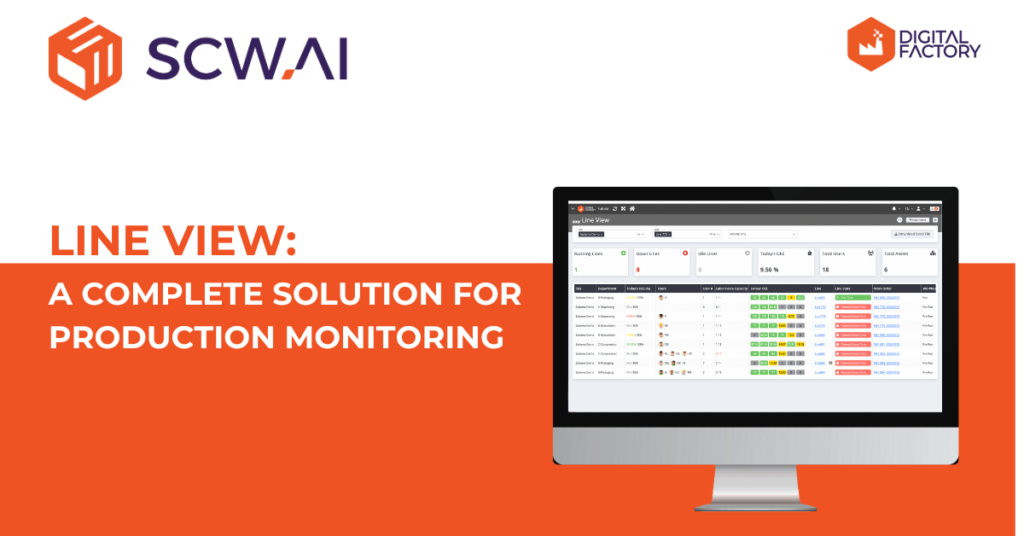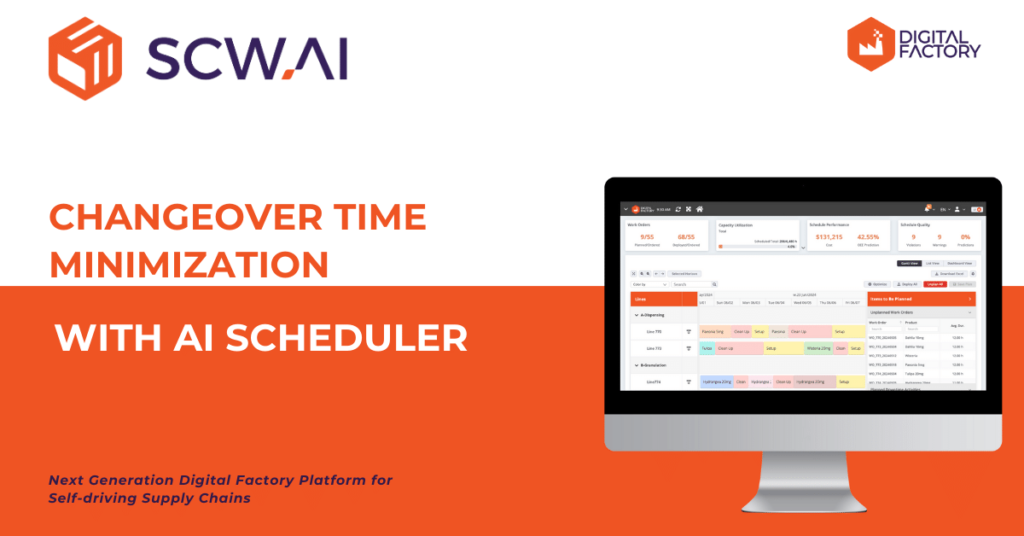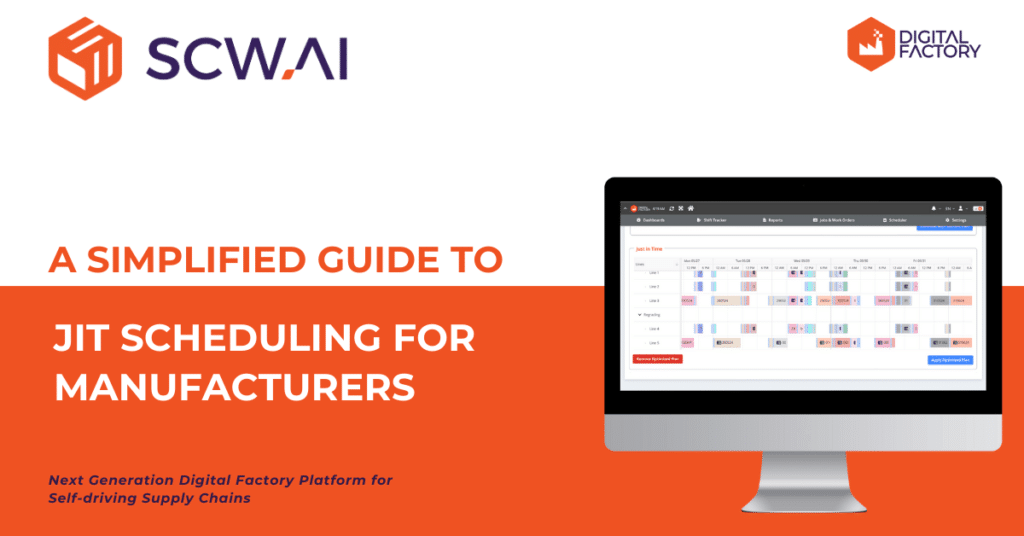As case studies from the World Economic Forum on fully digitized factories around the globe demonstrate, IoT automation enhances various manufacturing KPIs by increasing shop floor visibility and supporting data-driven decision-making for managers. For example:
- Huayi’s Shanghai factory achieved a 10% improvement in OEE (Overall Equipment Effectiveness) due to real-time equipment monitoring.
- Mondelēz’s Sri City factory optimized product yield by 31%.
- Dr. Reddy’s Laboratories in Hyderabad reduced quality deviations by 52% and more.
Despite the real-life benefits of IoT automation for industrial organizations, a Deloitte study revealed that over 60% of manufacturers are hesitant to invest in these tools. Furthermore, considering that only 1% of factories are fully digitized, the majority likely rely on inefficient manual data collection.
This article introduces an alternative for effortless real-time industrial data collection by showcasing four deployment methods for SCW.AI’s IoT devices. These methods provide data collection solutions for all factories, from those with no digitization to early adopters with existing AI solutions on the shop floor. We will explore real-life examples throughout the article to illustrate how we support clients with IoT automation solutions.
What is IoT Automation for Manufacturers?
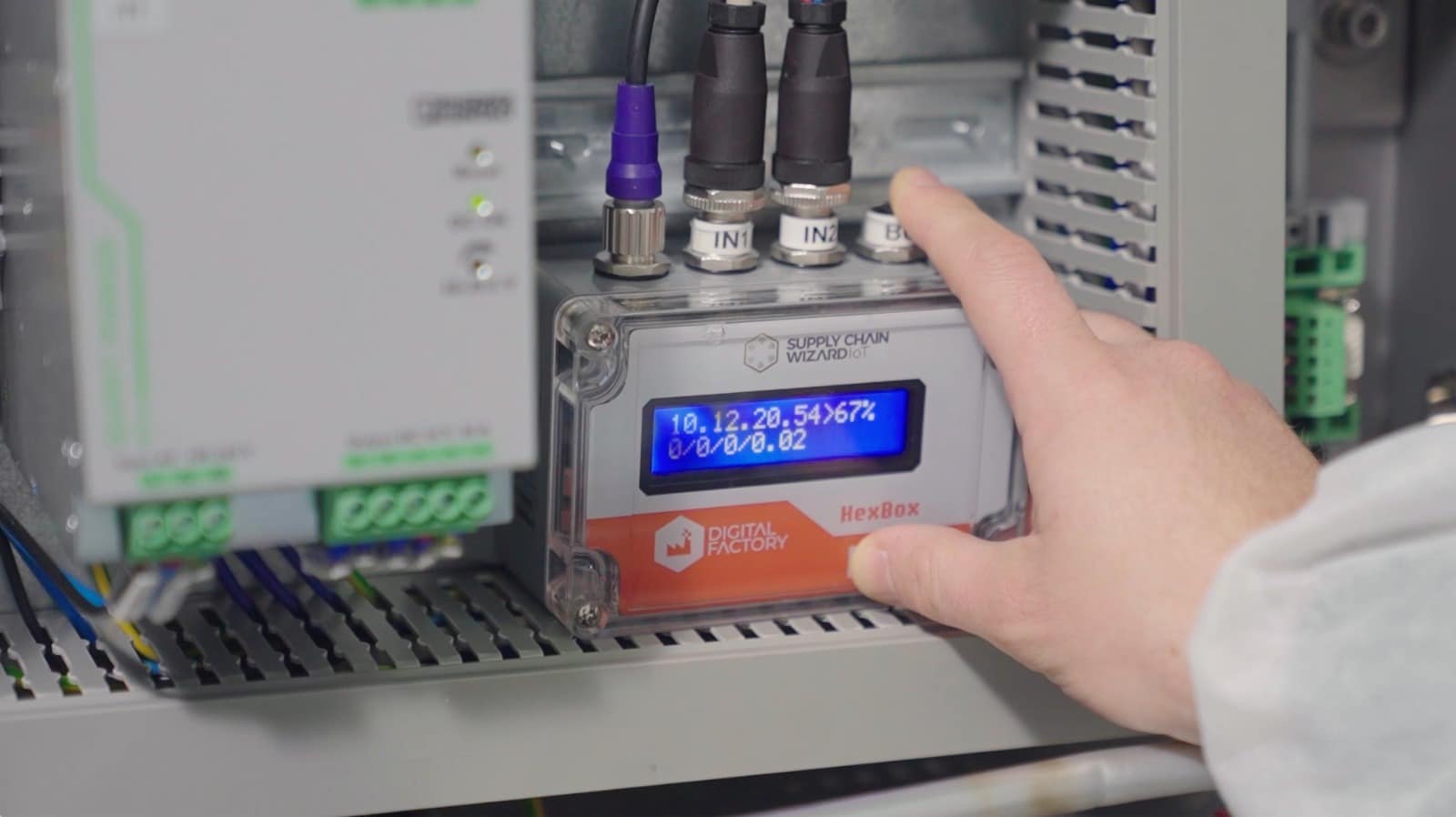
By seamlessly integrating smart sensors, actuators, and other IoT devices into factory environments, industrial organizations can gather valuable data without manual effort. These data streams encompass various facets of production, enabling organizations to gain insights into machine performance, labor efficiency, production speed, and product quality.
What Types of Factory Data Can be Collected with IoT Automation?
- Machine Data: IoT sensors embedded within machinery capture crucial parameters such as electricity current, vibration levels, and heat generation. This data offers insights into equipment health, allowing organizations to preemptively address potential issues and optimize total productive maintenance practices.
- Labor Data: RFID cards or wearable devices equipped with IoT technology track the movements and activities of workers on the factory floor. This data provides valuable insights into labor efficiency, productivity, and working hours.
- Production Speed Data: IoT sensors deployed along production lines monitor the speed and throughput of manufacturing processes in real-time. By analyzing production speed data, organizations can measure KPIs such as OEE, cycle time and takt time. Thus, managers can identify bottlenecks, optimize workflows, and ensure line balancing.
Data Transmission to SCW.AI’s Cloud Platform
IoT devices seamlessly transmit collected data to SCW.AI’s cloud-based Digital Factory Platform through APIs or IoT gateways. This platform acts as a centralized repository for vast amounts of industrial data, facilitating real-time analytics, monitoring, and decision-making. For example, the OEE Waterfall Report (pictured below) empowers managers to assess and address specific line inefficiencies through customized actions.
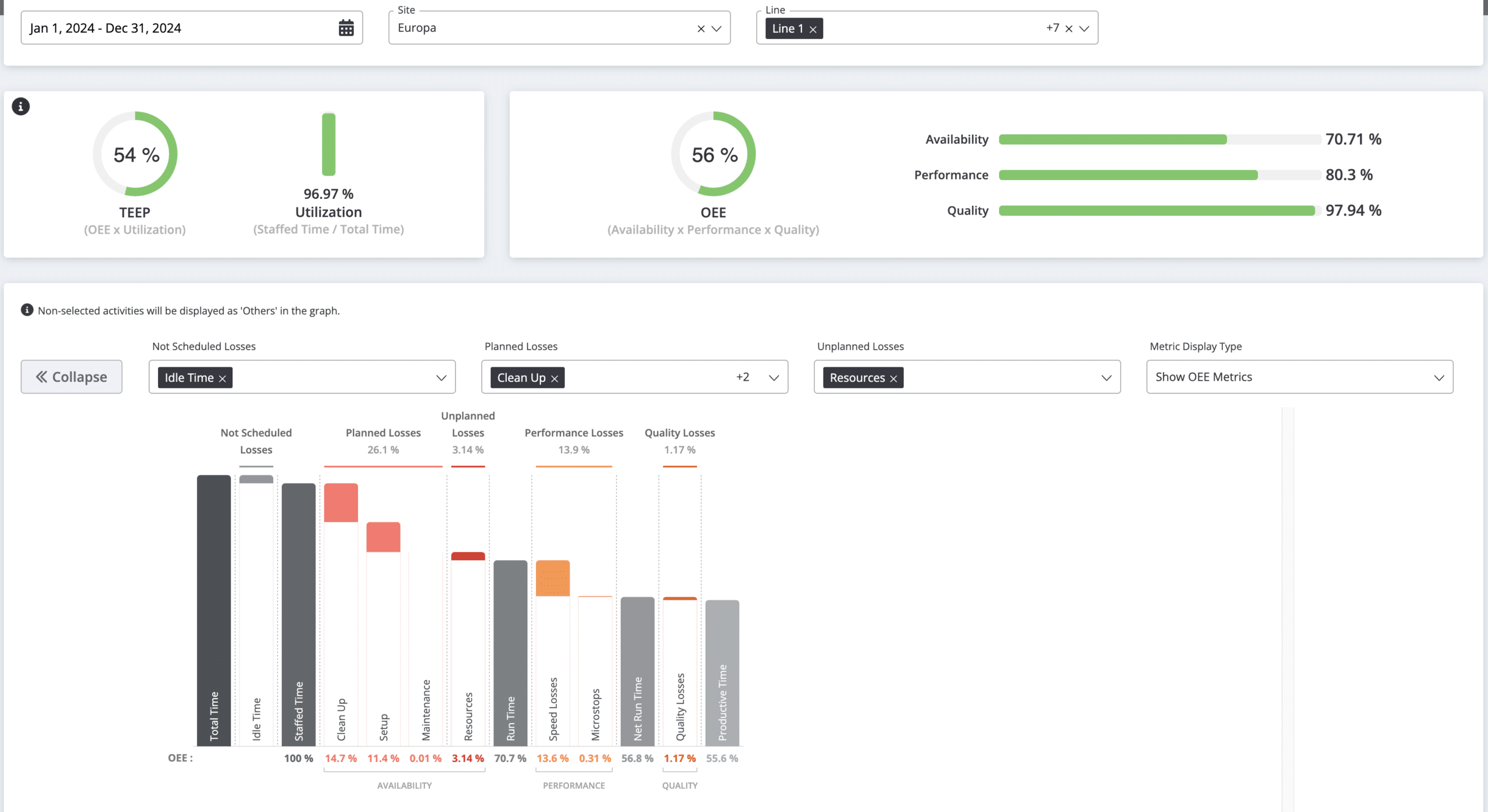
4 Types of IoT Automation Solutions of SCW.AI
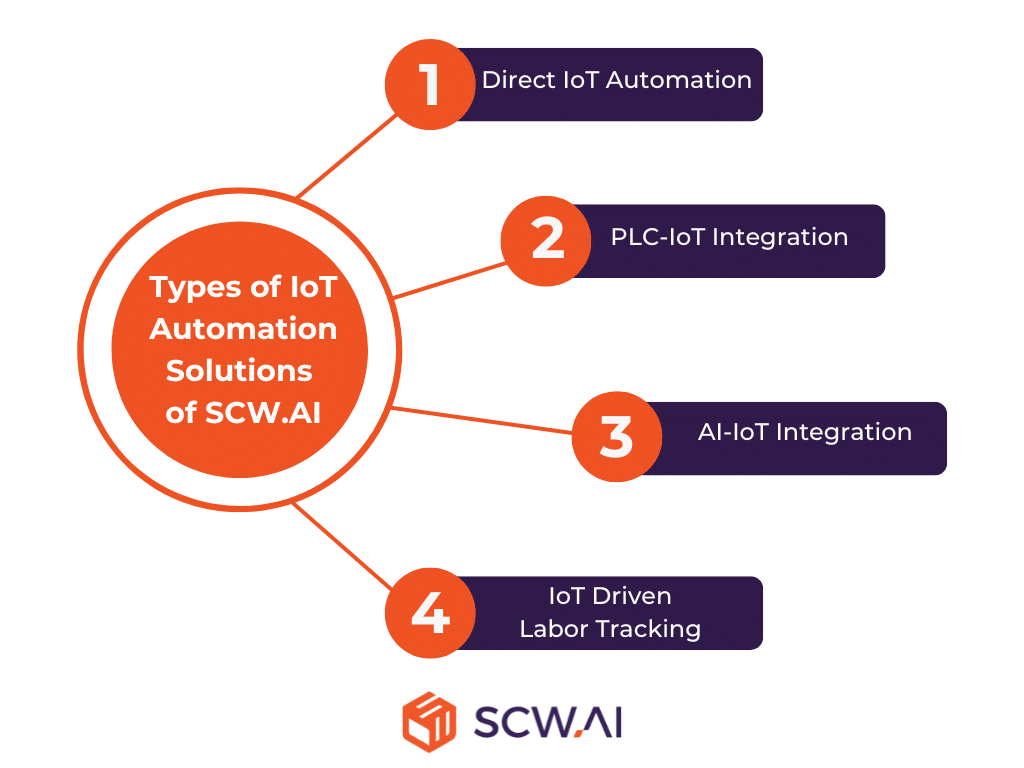
1. Direct IoT Automation
Our decade of experience reveals that many manufacturers today lack equipment with Modbus PLC or OPC connections. Additionally, some may have such equipment but regulations or board decisions prevent sharing data with third parties like SCW.AI through OPCs or PLCs.
In these scenarios, real-time data collection for our dashboards, alerts-notifications, mobile manufacturing app, and manufacturing AI solutions relies entirely on IoT automation to gather real-time data automatically.
For customers in these categories, we deploy IoT devices at various stations or machines on the production line. This allows us to monitor production flow and identify any discrepancies.
To differentiate different types of losses, we create custom tags for our customers. For instance:
- Micro Stop: Sensors detect no product movement for two minutes.
- Minor Unplanned Downtime: Sensors detect no product movement between two and ten minutes.
- Medium Unplanned Downtime: Sensors detect no product movement between ten and thirty minutes.
- Major Unplanned Downtime: Sensors detect no product movement for more than thirty minutes.
Furthermore, our IoT devices can collect data on electrical current and vibration. If your factory has identified correlations between these parameters and specific downtime types or changeover times, we can incorporate this information into our tagging system as well.
Our system also intelligently handles planned downtime events. For example, if your factory has a 30-minute lunch break at noon, we automatically categorize this period as “unavailable” rather than downtime. This ensures accurate production flow monitoring and avoids skewing downtime metrics.
Direct IoT automation offers another advantage: Station-level production monitoring. Sensors at each machine’s entrance and exit enable managers to track performance at the individual station level, not just the entire line. This is crucial because a production line is only as efficient as its weakest machine.
For example, the illustration below shows how a downtime event at Station B can ultimately halt the entire line because Station K relies on Station B’s output. By monitoring station-level data, line leaders can identify bottlenecks and address issues before they disrupt the entire production flow.

2. PLC-IoT Integration for Automated Data Collection
Programmable Logic Controllers (PLCs) are a popular method for automated data collection in manufacturing. However, without OPC connectivity, the transmission of data from machines to dashboards or AI systems requires IoT.
Moreover, many PLC models provide data in hexadecimal format. This format uses bits and characters that are often unreadable and unintuitive for many users.
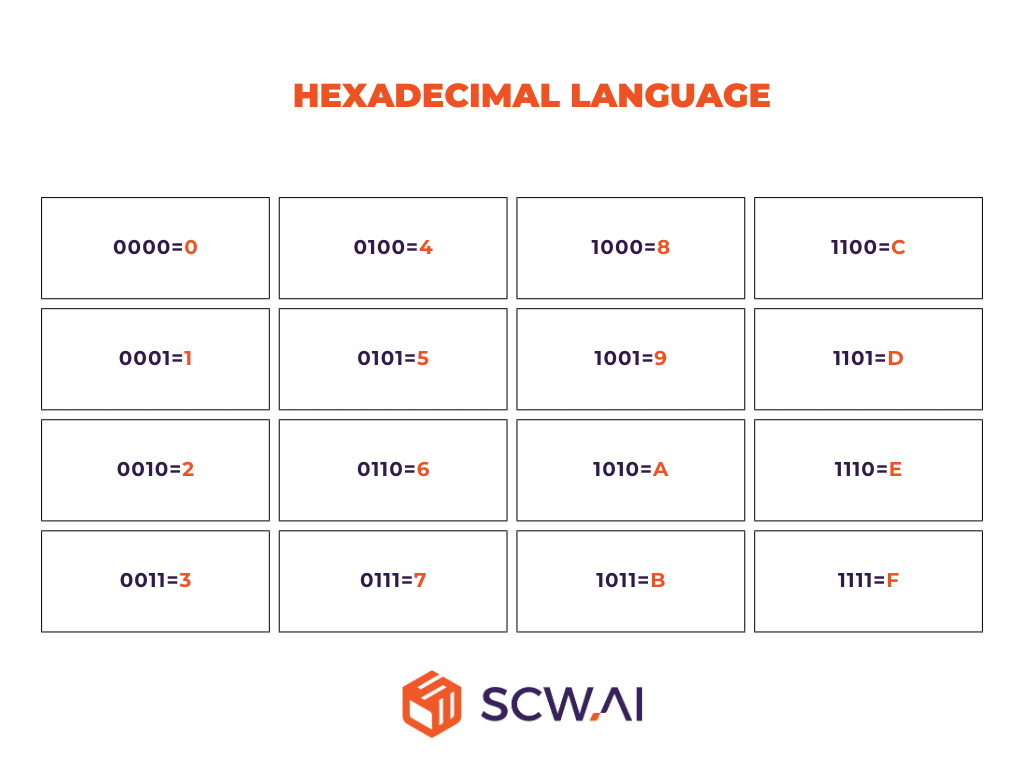
Our IoT solutions bridge the gap between PLCs and our Digital Factory Solutions. They seamlessly translate the cryptic hexadecimal language of PLCs into human-readable data and categorize it such as:
- Unplanned downtime
- Setup
- Cleaning
- Microstops, and more.
This empowers executives with rich, actionable insights. Thanks to PLC-IoT integrations manufacturers can identify bottlenecks in production processes and develop solutions to address those inefficiencies. Another use case might be building advanced automated factory solutions, such as machine learning-driven predictive maintenance models. These models can be trained using PLC data as input, enabling proactive maintenance and preventing costly downtime.
Below image demonstrates how SCW.AI’s IoT tools integrate with PLCs.

3. AI-IoT Integration for Automated Data Collection
Our approach offers another method for collecting machine data, leveraging computer vision models collaboratively working with IoT tools. Experience shows that integrating AI and IoT for automated data collection delivers near-perfect accuracy.
Many factories utilize light towers that display green, yellow, blue, and red lights to indicate production phases. As a first step, we train computer vision models to recognize these light colors, akin to self-driving cars identifying objects on the road.
Advanced algorithms then analyze these light patterns to understand production line status. For example, a specific sequence of blue, yellow, and red lights might signify a particular type of unplanned downtime.
In a second step, IoT devices gather real-time data on vibration and energy consumption from the machines. This data feeds into the AI model, further refining its understanding of the production line’s status. By combining these approaches, manufacturers achieve near-completely automated production monitoring with exceptional accuracy.

Interested in learning more about AI applications in manufacturing? Read our comprehensive article.
Curious about the specific use cases of generative AI in manufacturing? We have a dedicated article for you.
4. Labor Tracking with IoT Driven RFID Cards
Manufacturing industry combats the labor shortage that threatens their profitability. A key solution lies in optimizing labor productivity, ensuring workers are assigned tasks that best utilize their skills.
To effectively identify the strengths and weaknesses of each worker, manufacturers must gather pertinent data. SCW.AI’s IoT solutions offer the necessary data collection capabilities. Thanks to the RFID card system, manufacturers can track which workers check in for specific lines during designated time frames.

Moreover, SCW.AI’s IoT automation solutions facilitate the collection of production and machine status data, all consolidated within a single platform. This enables manufacturers to assess workers’ proficiency in tasks such as setup for particular products or cleanup for specific lines. By leveraging this information, manufacturers can strategically schedule workers and tailor personalized training programs based on individual skill sets and experience.
For example, the Labor Performance Report depicted below illustrates data collected by IoT devices, providing valuable insights into workers’ performance.
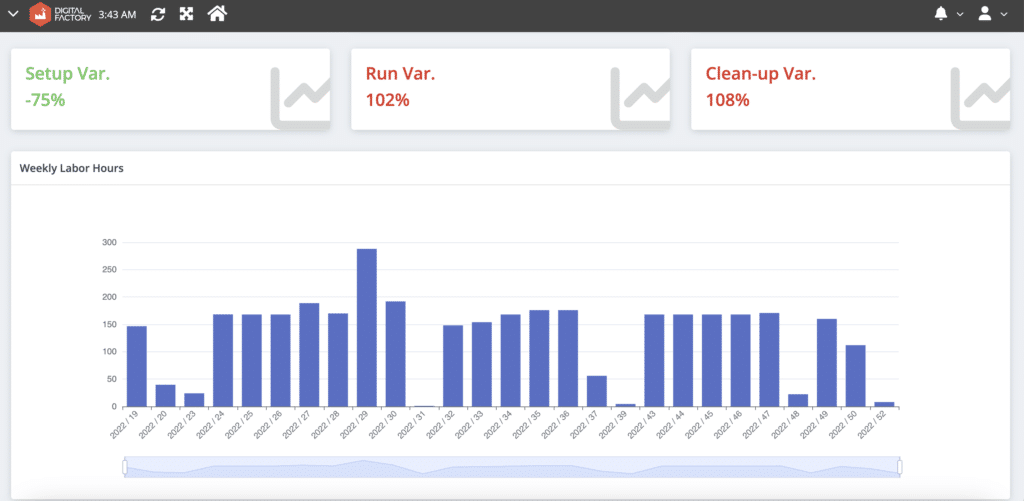
About SCW.AI
SCW.AI designs Digital Factory solutions regarding IoT automation and more that streamlines data gathering, interpretation and decision making processes via automated dashboards and AI models.
To learn more about how you can digitize your factory within less than 100 days, book a demo now.
